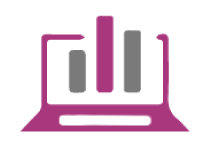Video technology for the economic operation of remote pond treatment plants

audako News
1 Pond treatment plants in rural areas The construction of pond treatment plants was heavily promoted until the 1990s: Today, they are still important pillars of municipal wastewater management in rural areas. However, in rural regions in the...
1 Pond treatment plants in rural areas
The construction of pond treatment plants was heavily promoted until the 1990s: Today, they are still important pillars of municipal wastewater management in rural areas. However, a lot has changed in rural areas in recent years. There have been profound structural changes, as many smaller municipalities no longer operate their wastewater disposal infrastructure themselves, but have handed it over to efficient, larger operators, such as our Wastewater Association of Upper Hesse (AVOH). One of the reasons for this development is the increased demographic change in rural areas. Due to declining population figures, wastewater disposal facilities there are difficult to operate economically. Due to the precarious budgetary situation of many municipalities, it is also often no longer possible to finance necessary modernizations.
2 The challenge in operation
Pond sewage treatment plants are actually ideal plants for rural areas, where there is sufficient land available, due to the manageable technology and the high process stability. If there were not a big challenge besides the water law regulations: the operation of these plants. Especially when the plants are located far from each other, operation is costly and personnel-intensive. For example, the Wastewater Self-Monitoring Ordinance of the State of Hesse (EKVO) prescribes a daily inspection for "wastewater treatment plants with biological treatment stages discharging directly into bodies of water" in size classes 1 and 2 (up to 5,000 PE). This concerns the "condition and function of the clarification and measurement equipment essential for the operation of the plant". In concrete terms, this means that every plant must be inspected and inspected by employees every working day and the results recorded. This is even the case if essential parameters of the plant are already continuously recorded via online measurements. In the AVOH area, the workday inspection of four remote wastewater treatment plants alone ties up one employee and one vehicle to a great extent. Per year, only for these four plants, moreover, about 16 000 km are covered (and about 2.5 tons of CO2 are emitted).
3 Virtual walk-through via video
The AVOH therefore worked with automation specialist narz systems to find a solution. The aim was to significantly reduce the costs of monitoring without neglecting the requirements of the EKVO. Our wish was to find a replacement for the daily walk-through with a virtual walk-through. In addition to the online monitoring of various parameters, it should also be possible to monitor the pond surface (for example, function control of the aeration) and the outlet (for example, control for turbidity or discoloration) by means of high-resolution still and moving images. The challenge here was to incorporate the previous workflow and its documentation into the software. In close coordination with the responsible water authority, the essential key points were defined in order to meet the requirements of the EKVO: If no "virtual inspection" of a plant has taken place within a defined time window, an alarm (with alarm cascade) is triggered and archived. Authorized operators can perform a visual inspection of the pond treatment plant using live and archived images and acknowledge and comment on the process (the "virtual walk-through"). Images, acknowledgement, and comments are archived in an unalterable manner, including timestamp and operator (Figure 1).
Parallel to the virtual walk-through, all essential plant parameters (flow, temperature ...) are continuously recorded and archived online. In addition, the system captures and archives series of still images at specified times. The system automatically condenses the data collected in this way into a monthly or annual report that can be submitted to the water authority. A classic on-site inspection in accordance with the EKVO continues to take place at the AVOH once a week in order to inspect other plant components that are not covered by the virtual inspection.
4 The system structure
The components on site are based on proven technology: The heart of the plant is a programmable logic controller (PLC) that is used worldwide in industrial automation. The PLC serves both to control the plant and as a data logger for the pond values recorded by sensors (for example, temperature, flow rate, pH value ...). It independently triggers alarms when previously defined limit values are exceeded or malfunctions (e.g. blower) are detected. In addition, contacts on doors or control cabinets can be used to document inspections of the plant or to trigger alarms in the event of sabotage. If the PLC is buffered via a battery, a power failure of the plant can also be reported in a qualified manner.
The cameras used are weatherproof and largely vandal-proof IP (Internet Protocol) models that are very common in the security sector and reliably provide high-resolution images for inspection even under difficult lighting conditions (Figure 2). However, pond treatment plants are often not located within the range of DSL (Digital Subscriber Line) coverage, sometimes not even within the range of reliable coverage by mobile networks (GSM/GPRS, UMTS, LTE). In the plants of our association, therefore, either mobile communications (UMTS) or also Internet via satellite is used, depending on availability, to send the accruing data to the central office. Regardless of the technology used, data transmission is always secured via certificate-based strong encryption in a virtual private network (VPN) to prevent unwanted interference with the infrastructure and ensure the integrity of the data.
5 Operating "Everywhere"
The fail-safe operation of a control center for archiving and evaluating the data generated in wastewater treatment plants is costly and requires a minimum size for economical operation. For this reason, our association opted early on for a cloud service instead of operation on its own servers. However, this requires some basic preconditions:
Server location in Germany, operated by a company under German law switchover option at any time (while "taking along" all historical data) to operation on own servers.
For the user, this means little effort, because the solution for monitoring pond treatment plants can be used on any PC simply with the Internet browser. Tablets or smartphones are also suitable as mobile operating stations, allowing maintenance personnel to have an immediate video view of remote plants even when they are out of the office. Especially when an alarm is present, this is a great help, often enabling a more accurate assessment of the situation.
6 Practical experience
Now we can look back on one year of operational experience, during which the solution has fully proven itself in everyday operations. For the employees, the daily routine working time has been significantly reduced by the virtual walk-through. The fact that some of the administrative work that was previously done on paper is now automated is a very welcome effect for the employees. The investment has also paid off commercially in just under a year. Regionally neighboring operators have also recognized this fact and are now also starting to upgrade their pond treatment plants with the "virtual walk-through".
Related News

For the start of training in 2020, narz systems welcomed four young people. Three of them will do a vocational training, one will go through a dual study with the THM. Leon Steuernagel (electronics technician for industrial engineering), Lukas Ortstadt (dual bachelor's degree program in engineering - electrical engineering/technical informatics),

Everything for secure network operation Herbstein-based narz systems GmbH & Co. KG has been certified according to the international standard for IT security HERBSTEIN (red). With a certification according to ISO 27001, companies are certified your...



